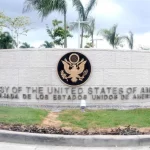Foreign direct investment towards region fell 9.1% in 2015 to total US$179.10B

With proactive and integrated policies, countries can takeadvantage of FDI to diversify their economies, boost innovation and respond tothe challenges of the 2030 Agenda for Sustainable Development, ECLAC says
(June 15, 2016) Foreign direct investment (FDI) inflows inLatin America and the Caribbean declined 9.1% in 2015 compared with 2014,totaling US$179.10 billion dollars, the lowest level since 2010, the EconomicCommission for Latin America and the Caribbean (ECLAC) announced today at itsheadquarters in Santiago, Chile.
This outcome is due to lower investment in sectors linkedto natural resources, mainly mining and hydrocarbons, and to the decelerationof economic growth, above all in Brazil, the United Nations organizationindicates in its annual report Foreign Direct Investment in Latin America andthe Caribbean 2016, released this Wednesday during a press conference.
For 2016, ECLAC estimates that FDI will remain below thelevels reached in recent years, in line with countries’ economic prospects. Itcould decline as much as 8%, although it will continue to be an importantfactor in the region’s economies, so it is necessary to attract quality flows,the Commission says.
“In the current configuration of the global economy,foreign direct investment is destined to play a relevant role in national andregional development processes. With proactive and integrated policies,countries can take advantage of these flows to diversify their economies, boostinnovation and the incorporation of technology, and respond to the challengesof the 2030 Agenda for Sustainable Development,” said Alicia Bárcena, ECLACExecutive Secretary.
The decline seen in 2015 in Latin America and the Caribbeancontrasts with the dynamism observed at a global level, the document notes.Last year, global FDI flows expanded 36%, reaching an estimated total of $1.7trillion dollars, driven by an intense wave of transnational mergers andacquisitions focused on developed countries and the United States inparticular.
Despite the overall decline in the region, country figuresvaried. In Brazil, FDI shrank 23% to $75.075 billion dollars, although it continuedto be the top recipient of these flows in the region (concentrating 42% of thetotal amount). In Mexico, the second-biggest recipient, inflows increased by18%, reaching $30.285 billion dollars, one of the highest levels in sevenyears. The manufacturing sector, mainly the automotive industry, andtelecommunications received the biggest investments in that country.
The decline in mineral prices negatively affected FDIincome in Chile ($20.457 billion dollars) and Colombia ($12.108 billiondollars), which fell 8% and 26%, respectively. Upon analyzing the sectoraldistribution of these flows, it can be seen, for example, that in Colombia theparticipation of primary sectors (which includes mining) dropped from 51% in2010-2014 to 31% of the total in 2015.
In Argentina inflows expanded 130% to $11.655 billiondollars, which can be explained by the fact that in 2014 the nationalization of51% of energy company YPF, carried out in 2012, was accounted for (whichrepresented a divestment of nearly $6 billion dollars in 2014).
In Central America FDI income increased 6%, totaling$11.808 billion dollars. With 43% of the total, Panama continues to be the mainrecipient in the subregion; it is followed by Costa Rica (26%), Honduras (10%)and Guatemala (10%). Meanwhile, foreign direct investment in the Caribbeandeclined 17% to $5.975 billion dollars.
As far as medium- and long-term trends, the studyhighlights important changes in the projects announced between 2005 and 2015:the relevance of extractive sectors has declined, the automotive sector hasshown a special dynamism, and the importance of telecommunications, renewableenergy and retail commerce has increased.
“Investments in renewable energy and other environmentalprojects are the basis of ECLAC’s proposal for boosting the region’sdevelopment with an environmental ‘big push,’ to move towards a pattern oflow-carbon production, energy and consumption,” Alicia Bárcena emphasized, inreference to the last institutional document Horizons 2030: Equality at theCentre of Sustainable Development, presented during the Commission’sthirty-sixth session held recently in Mexico, where this proposal is explainedin detail.
In 2015 the United States was once again the main investorin the region (with 25.9% of FDI), followed by the Netherlands (15.9%) andSpain (11.8%).
At the same time, FDI outflows from the region declinedsubstantially to $47.362 billion dollars in 2015, down 15% from the yearbefore, which reflects the moderation of the expansion that companies known as“translatinas” had begun between 2007 and 2012. Based on these companies’ stockof investments, Brazil and Mexico are the countries with the most capitalinvested outside their borders. However, in 2015 Chile was the biggest investorabroad.
The publication devotes a chapter to analyzing theevolution of FDI in metallic mining, which had positive consequences in recentyears in terms of exports and fiscal income, but which has not had the sameresults as far as productive diversification or the formation of value chainsin countries.
The last section of the report, meanwhile, examines theimportance of FDI as a driver of the accumulation of innovation capital.
“Although FDI’s direct contribution to gross fixed capitalformation is small, transnational companies can play an important role ineconomic development to the extent that they contribute to the creation ofinnovation capital,” the document sustains. “The possibility of harnessingthese benefits depends on the skill level of the labor force, thecompetitiveness of the local industry and its capacity to supply foreign firms,and the existence of an associated cluster.”
More information at www.cepal.org.

















